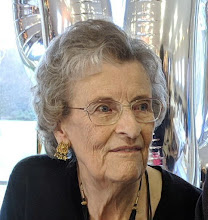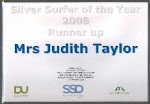It cannot be given to many people to know what their grandfather bought in the way of clothes for his trousseau; grandmother, possibly, since women are more inclined to value and to keep records of the things which are important to them. But I had a grandfather who was a very precise and careful man: his hobby was entomology, or the collection and study of insects, and by the time of his death he had amassed a collection of 65,000 flies, all painstakingly and beautifully laid out in cabinets and catalogued. It is now in the Natural History Museum in London. So it was entirely in his character that he should keep meticulous accounts throughout his life, both in his business and at home.

Grandpa as a child
Some of these account books came down to me through my mother, and have been lurking in a suitcase under the spareroom bed for decades. I have finally decided that the whole collection should go to the Archives & Heritage section of the City Library in Birmingham, where my grandfather was a master jeweller in the business started by his grandfather. But of course, as I begin to pack them into boxes I cannot resist having another look through the more interesting ones, to see what treasures from the past may lie therein.
Grandpa aged 20
The one I have just been dipping into is his personal account book covering the period from two years after his engagement, to two years after his marriage, that is 1893 to 1899. The book therefore contains a detailed record of all his purchases as he prepared to become a married man with a household of his own; of every penny that he spent on his honeymoon, as they did the grand tour of Europe together; and of two years of being head of a household after his return. (I have to wonder in passing if he carried this heavy leather bound cashbook, weighing 1 and 1/4 lbs, on his honeymoon with him. Knowing him, I think it is more than likely.)

Grandpa and Grandma on returning from their honeymoon (both aged 30)
In 1893, when my grandfather was already engaged, he was taking home a salary of £2 a week. From 1895 he was entitled to a third of the profits of the business, with a minimum of £4 a week, but until his marriage he only took home £2 a week,while a further £2 was banked for him in his capital account. Two years after his marriage his share of the profits was increased from one third to two fifths.
Here is grandfather's trousseau shopping over a period of six months [see note at end]:
Flannel for pyjamas - 2/5
Wool for trousseau socks - 3/6
Flannel for pyjamas - 2/2
Wool for socks - 3/6
2 prs white gloves - 4/-
2 white ties - 1/-
8 suits underwear - £3.18.8d
Flannelette for pyjamas - 1/2
Pair boots - 12/6
Buttons for pyjamas - 10d
Pyjama girdle - 4½ d
More Vyella for pyjamas - 3/-
1 Silk Hat - £1.2.0d
1 Bowler Hat - 8/6
6 ties assorted @1/6 = 9/-
1 doz collars - 9/-
1 doz handkerchiefs - 7/-
2 prs gloves - 3/9 & 2/11
Patent leather boots - £1.4.0
Madras Muslin - £6.2.3d
Mrs Fiddian - making 8 new shirts - £3.0.0d
Balance for Madras Muslin - 6/6
Wool for socks - 6d
Mrs Fiddian - altering 3 shirts & making 3 suits of pyjamas - 17/-
1 overcoat repaired - 2/-
1 Frock coat and suit - £5.15.0d
1 Morning suit - £4.12.6d
1 light grey overcoat - £3.3.0d
1 overcoat cleaned & repaired - 6/6
Then came something even more important, paying the business, via his father JW, for the rings he had made for the great day, and for a pendant for my grandmother. I do not have my grandmother's wedding ring, but I do have one of the pearl bridesmaid's rings, inherited from grandfather's unmarried sister, and I have my grandmother's engagement ring; this too is rather touching, in that the roughness of the work reveals it to be one of my grandfather's earlier efforts, before he achieved the 'master' status that he did later in his life.
JW for 1 wedding ring - £1.8.6d
3 pearl rings for bridesmaids @ 10/- = £1.10.0d
1 pendant for Nell - £2.10.0d
And finally, rather touchingly, his final weekly payment for board and lodging at home:
Mother - last time - 15/-
Seven days later, on the 22 April 1897 he was married and off on his honeymoon.
Grandpa as I remember him
Now, I am extremely interested in those eight suits of underwear, as many years later, after my grandfather's death in 1948, I became intimately acquainted with certain items of his underwear. By that time he was wearing two-piece sets: longjohns, and a longsleeved vest with a shallow boat neckline - no opening and no buttons (though those have become fashionable for men's and women's shirts in later years). These suits were machine knitted in fine wool, in the palest of lavender marl (a term used today, apparently, to describe a mixture of two different coloured yarns). There were two unused sets of these admirably protective suits in my grandfather's effects, and my mother offered the tops to me. They made splendid long-line sweaters to wear over jeans, with a natty scarf tied in the neck. It was a great talking-point too, to tell people that I was wearing my grandfather's vests! I have done some online research on men's underwear in the late 19th and early 20th century and can offer the following picture to pique your imagination:
[ Bear in mind that British money in those days was counted in pounds, shillings and pence, represented by the written symbols £ s d, also referred to verbally in short as 'l. s. d.' An amount consisting only of shillings and pence could also be written so: 15/6. Then consider that there were 20 shillings in a pound, but 12 pence in a shilling, and one penny was further divided in half pence, and quarter pence known as 'farthings'.]





11 comments:
Such accounts (in both senses of the word) make things far more real than anything else. I love the fact that your grandfather spent 8/9 on flannel for pyjamas (a pity that he doesn't give the lengths of material that he bought) and almost as much (7/6) for wool for socks (again, a pity that we don't know the quantities or how many pairs were knitted). And I do wonder whether the 3 shirts that had to be altered were part of the 8 shirts he had made and, if so, why they had to be altered !
I learned about how important household accounts are from the novel "The Daughter of Time" by Josephine Tey. If you haven't already read it, it's well worth finding a copy (I can lend you one if you like. It taught me all about how and why history is written and the importance of who writes it and, if applicable, for whom it is written. Something always worth bearing in mind !
Wow, what a fantastic collection! Wonderful story too. I would imagine that they worked in the Jewellery Quarter in Birmingham, which is still there and well worth a visit. There are several museums in the area and lots of jewellery shops. I wonder who now owns your family's shop? (If you know the address I could probably find out).
My father kept a detailed list a bit like your grandfather's; his consisted of wedding and honeymoon expenses but I don't think it's in such detail. They were married on 16th April 1939, so a significant date is just around the corner. My sisters and I have copies of the list, and I think one of us must still have the original. I'll have to go on a bit of a hunt myself now!
Thanks for this Judith, really interesting!
Pam
It amuses me that a newly married young man deemed it necessary to spend so much money on night attire!
Frog Lady - I have read some of Josephine Tey, but I don't remember that particular one. I'll have a look for it.
Pam - the business was at 184 Warstone Lane, which I think was on the edge of he Jewellery Quarter. I don't think the premises form part of the present Jewellery Museum area. When the business was eventually sold in 1942, after my grandfather's retirement, the 'goodwill' fetched £100, and the contents of the buildings £209.8.6. I also have their original wedding present list.
Sheila - I wonder if it was really a large expenditure on flannelette for pyjamas, or if it was simply that he couldn't afford it all in one go. He was earning one third of the profits of the business, but only taking home a salary of £2a week prior to his marriage,while a further £2 was banked for him in his capital account. Two years after his marriage his share of the profits was increased from one third to two fifths.
What a wonderfully detailed record, and the photographs to go with it.
It's so good that significant material like this can be made available to others via the Museum.
Yes, I believe absolutely that museums are the proper places for such archives. But it is ironic that, after letting them lie for almost a lifetime, when I finally get them out to send them off, I start dipping in and discover the appeal of their treasures for the first time.
Flesh on the bones! Fascinating!
What a wonderful post J. History at your fingertips.
Thank you, Judith, for an intimate glimpse into a long-gone past. You are so very fortunate to have such a collection of memories.
I am indeed fortunate, Granny J. And I think it wasn't until I began researching my late husband's
forbears that I really began to appreciate the stories that could be found in these leftover documents from the past. I also have to thank a long line of 'keepers' in the family - (a heriditary trait undoubtedy) - for the fact that they have come as far as me. The oldest is the 200- year-old recipe book which I wrote about before (check out my posts under the 'retro' tag).
This took me right back, Judith.What
a great view of people in those times.
I think you'll like The Daughter of Time. It rather confirmed someone
(Napoleon?) who once said, "History is the lie that we agree upon."
annie 3
Post a Comment